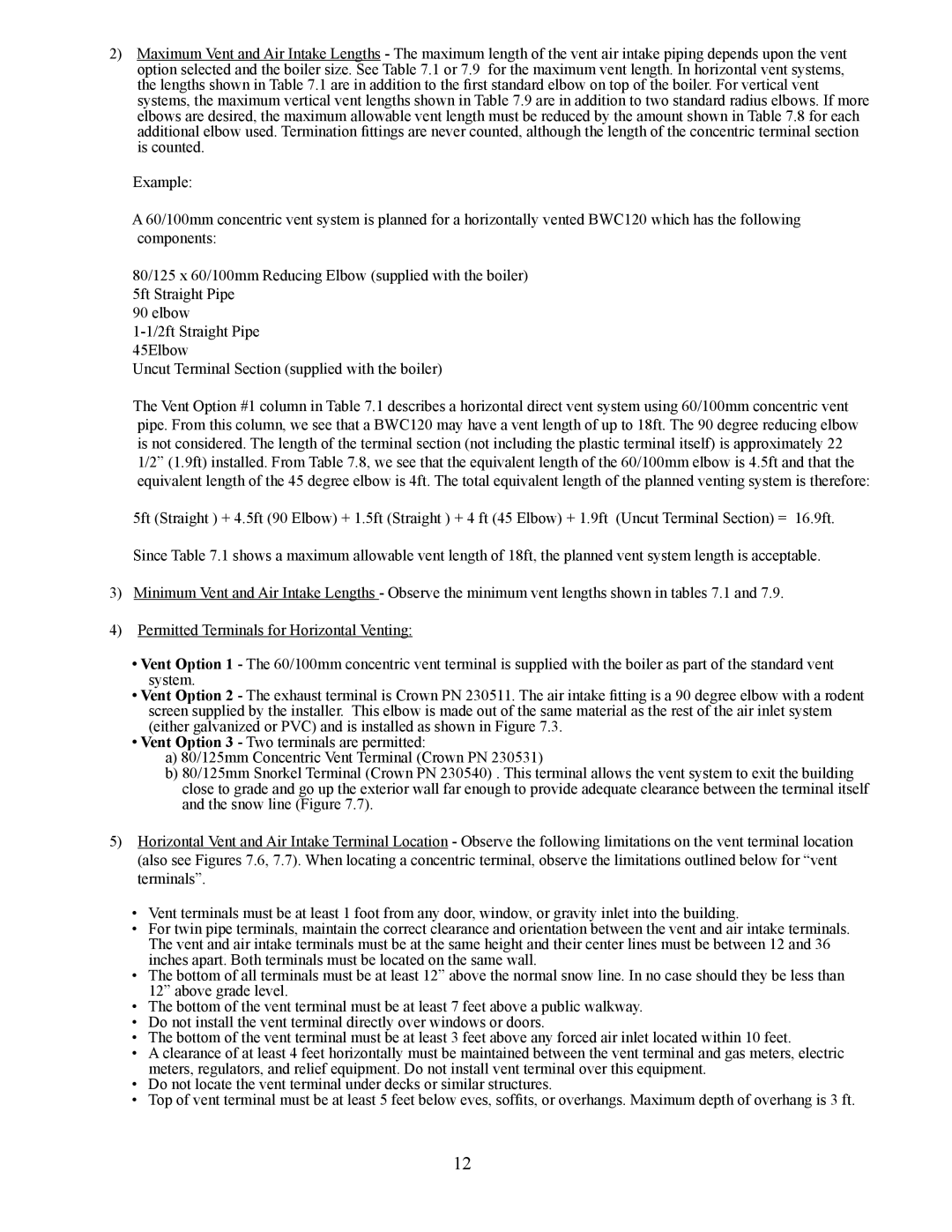BWC120, BWC070, BWC090 specifications
Crown Boiler Company has established itself as a leader in the heating industry, providing reliable and efficient solutions for residential and commercial applications. Among their innovative product line, the BWC series, which includes the BWC120, BWC070, and BWC090 models, showcases advanced technology and design features that cater to the diverse needs of consumers.The BWC series is designed to deliver exceptional heating performance while being user-friendly and efficient. One of the main features of these models is their compact design, making them suitable for installations in tight spaces, such as basements and utility rooms. This space-saving advantage does not compromise their power or heating capacity, as each model is engineered to handle a variety of heating demands.
A prominent technology in the BWC series is the high-efficiency, modulating condensing design. This allows the boilers to adjust their output based on the heating requirements of the space, leading to significant energy savings. By utilizing a variable-speed blower and an integrated control system, these boilers can operate at lower heating outputs when the demand is lower, ultimately improving overall efficiency and reducing fuel costs.
The BWC120, with an output of 120 MBH, is ideal for larger homes or light commercial applications, providing robust heating capabilities. The BWC090 offers a slightly lower output at 90 MBH, catering to moderately sized homes. Meanwhile, the BWC070 targets smaller residential settings with an output of 70 MBH, ensuring that there is a fitting option for a variety of heating needs.
In addition to their efficiency and compact design, the BWC models are equipped with advanced safety features, including built-in temperature and pressure relief valves. These safety measures give homeowners peace of mind, knowing that their heating system is operating safely and reliably.
Durability is another characteristic that defines the BWC series. Constructed with high-quality materials and designed to withstand the rigors of everyday use, these boilers are built to last. The easy-to-service construction ensures that routine maintenance is straightforward, thereby enhancing longevity and reliability.
In summary, the Crown Boiler BWC120, BWC070, and BWC090 models combine efficiency, advanced technology, and safety features, making them an excellent choice for anyone in the market for dependable heating solutions. Their adaptability to various heating needs, along with their space-saving designs, makes them suitable for a wide range of applications, ensuring comfort and reliability for years to come.
